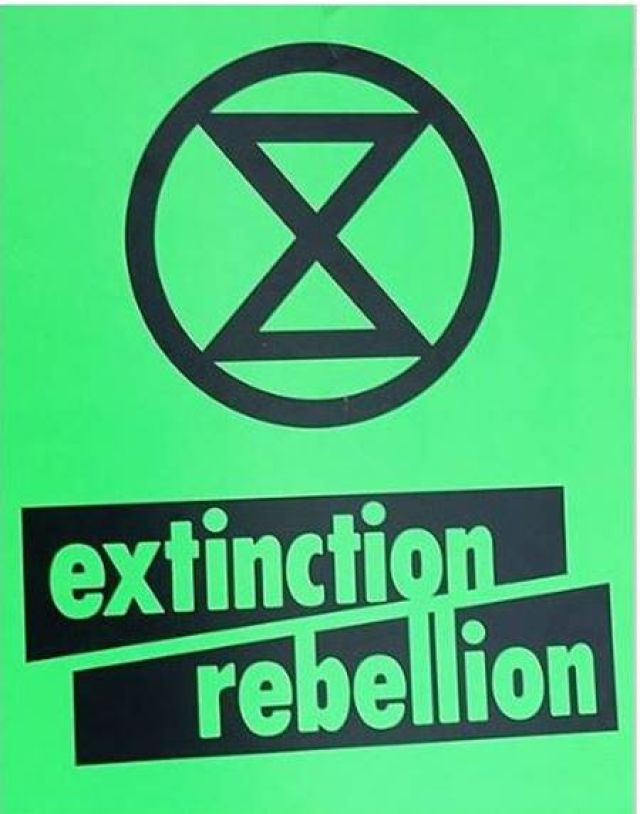
What began as a series of symbols with cryptic messages about climate change plastered on power poles in the suburbs and protests by as few as 20 people, has evolved into a broad movement that is mobilising thousands of people committed to mass civil disobedience in response to the climate crisis and fears of a mass extinction.
Extinction Rebellion (XR) began in Britain in October last year. Branches were quickly established in Australia, the United States and parts of Europe. There are now more than 374 branches of XR in 58 countries worldwide.
XR in Australia started with small meetings in February this year. Several smaller actions in different cities followed. But what really began its growth as a movement was the disastrous federal election result. The re-election of Scott Morrison led to large demonstrations in major cities, with the biggest rally in Melbourne attracting more than 1000 people.
XR has been growing ever since and now has more than 27 branches nationally, with new ones being established weekly. Members are actively involved in organising introduction meetings, die-ins, protests and other actions, while also playing a role in supporting and helping build other climate-related protests.
My local group has planning meetings of more than 40 and a mailing list of more than 500 names. Between 60 and 100 of the group’s members have participated in some kind of activity, such as attending a meeting, putting up posters or volunteering to carry out a task. That level of energy and enthusiasm was shown when the local group organised a protest on August 18, which mobilised more than 500 people for our ride-in-to-die-in action in the Moreland area.
One aspect of XR’s ideology that has inspired and mobilised people is its viewpoint that since the people in power have failed to act in response to the climate crisis, we have no choice but to rebel and be rebels for life until this crisis can be resolved.
The decentralised structure of XR has also provided a pole of attraction for new activists getting involved for the first time. The Australian climate movement has historically been bureaucratised by the dominance of NGOs, which tend to focus their energies on lobbying and soliciting donations. But XR’s decentralised structure means it is open to ordinary people who want to play a role in organising and participating in actions — a refreshing change of pace.
XR has also played the role of opening activist spaces in remote areas, with active branches in areas such as Bairnsdale in East Gippsland, Victoria and the Blue Mountains in New South Wales. These branches have organised consistent actions to put pressure on their respective councils to declare a climate emergency, which has been achieved in the Blue Mountains.
A guiding principle of XR that is often a focal point of discussion at the introductory discussions I have attended is that “we avoid blaming and shaming as no individual is to blame”. This shows that XR is a movement that emphasises the need for collective action, as opposed to individuals making lifestyle changes. This has been a historical tension in the environmental movement, which emphasised targeting individual consumer choices as opposed to targeting the polluters who are contributing to greenhouse emissions.
XR activists across Australia are now building and organising a global week of action beginning on October 7, which promises to be a huge display of civil disobedience. Actions will be held in local areas and campuses and introductory discussions will bring new people into the movement.
While it is unclear where this is all going, it is clear that XR has brought a new lease of life into the climate movement and is including a new generation of political activists.
[Jacob Andrewartha is a climate activist involved in XR Moreland in Melbourne]